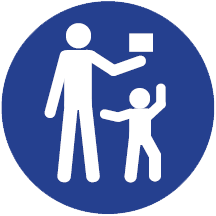How to judge a new website
What makes for a good web site? What are some simple tests that you can do to ensure that your website is working for you, and not against you?
We have a number of websites, and will update or replace one each month. It is amazing how quickly technology is changing and the fads are changing. This means that our core web sites need to be updated each 12 to 24 months, and our minor websites must be updated every 36 months. My laptop lasts longer than my web sites.
So I am writing a post on “how to judge a website” and I want this post to be as relevant in 5 years time as it is today. This is not my “2018 website checklist”, but I should do that soon.
Instead, this is my “website basics” post. This is the grassroots essentials for a website. These are the essentials and how I judge a new website.
The blink test
The first test that you need to do is the blink test. You can do this for individual pages, brochures, banners, tradeshow stalls, uniforms, etc etc etc.
The test is quite simple – start with our eyes closed and then quickly open them and close them again. You have had a blink of an eye to see your website.
What did you see? What did you notice? What immediately caught your attention?
Is this what you want your visitor to first notice? Is it important?
Or worse still, did nothing catch your eye? Was it so cluttered and complex that there were too many things competing for your attention?
You need to be in control. You want your design to guide the visitor as to where to look and what to notice.
“It’s the vibe”
Now let’s pay a slight amount of attention to the page. Not too much. It’s not about looking at the specific text or images, but about the vibe.
In a couple of words, describe the emotion that you get from the page. For the less “arty” people, what are two or three adjectives that describe the page?
For example, is the page cheerful, happy and friendly? Or is it serious? Is the page stylish or informal?
If you can’t describe the site this way, then that’s probably a failure straight away.
Now the magical question – do those words describe your product and/or company? Is this the impression that you want your customer to have?
For example, I sell temperature loggers. That’s a technical product and on some of my sites I want the user to feel that we are technically competent and “scientific”. On other sites, however, I want the impression that the product is easy to use and friendly. They are similar products, but the emotional response I am after is different.
Why?
Why does your website exist? Are you after new customers (i.e. an ecommerce site), new contacts (i.e. a lead generation site), or do you have other purposes?
Most of my sites are ecommerce sites and my ultimate goal is to sell product on those pages.
I have some information only sites and my goal is to build up my list of contacts. Many service based businesses fall into this category.
Finally I have a couple of information sites that are more of a hobby and are used to help shape public knowledge and opinion.
What is the purpose of your site? Can you clearly state it and can you measure it?
“One small step for man…”
If you know the purpose of your site, how many steps does it take to complete that purpose?
Every page or click that the user needs to do to achieve that purpose is another opportunity for them to disappear.
For every page that a visitor is likely to enter your site, how easy or hard is it for them to do what you want them to do?
For example, we had a site where the visitor first had to go to the information page, and then another page before they could add an item to the cart. We changed this so that they could add the item straight to the cart from the home page. We eliminated two steps and our conversion rate soared.
“Simon Says”
As well as the entire site having a purpose, every page on a web site should have a purpose. Ideally it should have a single purpose but that’s not always possible. The home page is a classic page which may have multiple purposes.
What is the purpose of the page? Is it to allow a visitor to buy a product, subscribe, get their contact details, provide information etc?
The critical test is – “is it really obvious to the visitor what they need to do next?”
This is typically called the “call to action” and it needs to be obvious. You need to tell the visitor what you would like them to do.
Getting back to the blink test, if the answer to the blink test is the call to action, then you are on a winner. If they can’t even find the call to action quickly then you need to rethink the page.
Intuitive
This is now the opposite of the “simon says” rules. This is where I know what I want to do, and can I do it?
For example, a customer may visit a site wanting to buy a particular product, or a visitor may want your contact details. Can they quickly do what they want to do?
I suspect that there is an attempt to strong arm visitors into doing exactly what we want them to do. Telcos come to mind. What we want to do is contact someone to fix a problem and what they want us to do is sign up for a new contract. My thoughts on this are simple – don’t.
Supportive
My final criteria is slightly odd, but hopefully will make sense – does the site and page support me in doing what needs to be done?
At the moment there is a push for “social proof”. Social proof are things like reviews and ratings, and testimonials. What they do is help show that your product or service does what you promise. It is about overcoming the “are you trustworthy?” fear.
Warranties and consumer protection policies also help.
These are all examples of content and how, where and what they are will change over the years. They are fads but the underlying principle is constant.
Another example is in the text on a button. If I press a button that says “Buy Now” will I be committed to buying it? Text like “More Information” is easier to press.
SEO
And as an afterthought I throw in the title “SEO” because this is where it belongs. SEO is “Search Engine Optimisation”. It’s about ensuring that Google knows about your site and will send traffic your way.
The reason why I say it needs to be last is because you fundamentally want a site that is worth visiting as your top priority.
Once it is worth visiting, then you can do the SEO tests, but that’s for a future post.
But what about this page?
Having now written all this opinion, how does this site stack up? Even worse, what about this page?
Have I achieved my purpose?
This is actually an email I wrote to a friend on tips for judging their new website. I liked it so I thought I would turn it into a post so I could share it with others.
It is also content I can share with my customers and contacts to help them. It has nothing to do with temperature loggers, but everyone needs a website. So it’s just a piece of information shared. I’m not after their contact details.
The win I am getting, however, is traffic. My goal with this post is to bring you to my site. Next week I will have my SEO test check list and a link here (famous last words) so you will check it out.
And you may want to contact me to ask me to give advice on your web site – a free offer for now.
And in 2019 I will start to share my great web development team…for a fee!
For now, enjoy the freeby.

